Chhath Puja, Indian Festivals
Chhath Puja Story, Rituals, and Traditions: Chhath Puja 2023 Dates
Chhath puja story rituals and traditions are some of the most sought-after festive searches on Google. The Chhath Puja 2023 starts from the date of 17th November 2023 to 20th November 2023.
India is renowned the world over for the vibrant festivals that are part of our cultural lives. Each festival is deeply rooted in history and holds scientific as well as mythological significance. Chhath Puja too has its fair share of stories, rituals, and traditions associated with it.
Chhath Puja is also known as Surya Shashti. From this it is clear that this unique festival involves intense and devotional prayers to the Sun, expressing gratitude for sustaining life on Earth. Even though there are no idols worshipped, Chhath Puja is one of the purest forms of nature worship. It highlights the deep and spiritual connection between humans and environment.
Chhath Puja 2023: Date, Time, and Significance
The festival of Chhath is celebrated for four days with great pomp, vigour and devotion. It is also known as Surya Shashti and also as Mahaparva Chhath. It starts on the Shukla Paksha Chaturthi of the Kartik month of Hindu calendar (October-November) and ends on Shukla Paksha Saptami. Chhath Puja in 2023 starts from the date 17th November 2023 and ends on 20th November 2023.
Also Read: Get the Complete Guide to Navratri Puja Vidhi in 2023: Step-By-Step Durga Puja
The 4 days of Chhath 2023 are:
- Nahay Khay on Chaturthi
- Rasiaav-Roti/Kharna/Lohanda on Panchami
- Sanjh ka Aragh on Chhath, and
- Bhor ka Aragh on Chhath
Chhath Puja is an important Hindu festival dedicated to the Sun God, celebrated with great enthusiasm and devotion as a four-day festival in Bihar, Jharkhand, and Uttar Pradesh.
Chhath Puja Schedule for 2023
- Chhath Puja Date: Sunday, November 19, 2023
- Sunrise on Chhath Puja Day: 06:46
- Sunset on Chhath Puja Day: 17:26
Chhath Puja Rituals
Day 1: Nahay Khay
Devotees start the festival by taking a holy bath. For whom it is possible they primarily take in the river Ganga. Later on, they use the Ganga jal to prepare simple Chhath prasad the famous Lauka Bhaat, typically prepared using bottle gourd, pumpkin, and chana dal. The day is spent by cleaning their homes and compounds, which sets the stage for the upcoming celebrations.
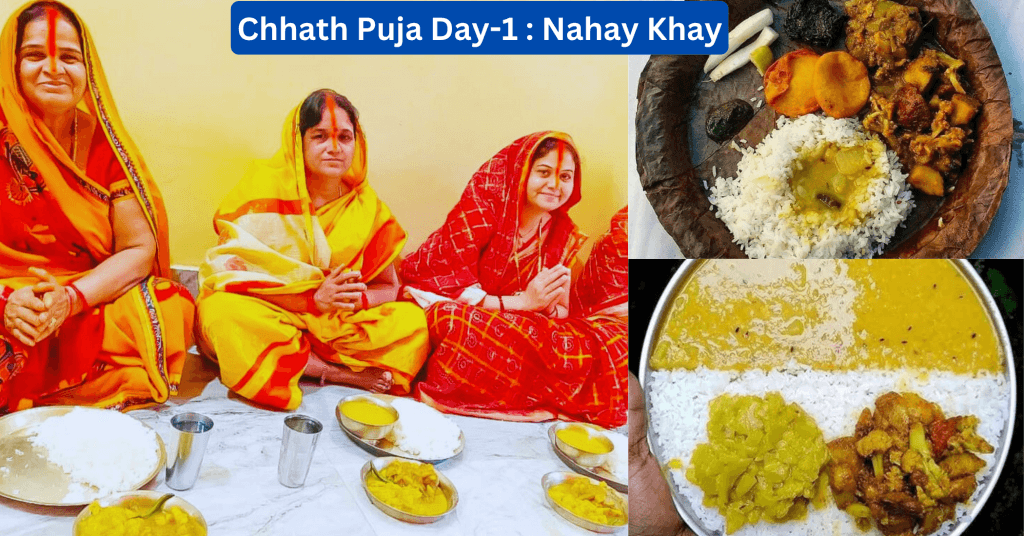
Day 2: Rasiaav-Roti/Lohanda/Kharna
On the second day, i.e., the Panchami, the festive ritual for devotees is to observe a fast for the entire day and focus on the preparations for the Chhath festivities. For this, they buy sugarcane, and different fruits. In they evening, they have a unique Chhath prasad called the Rasiao-kheer which is the common gur ki kheer. Once the Puja is performed in the evening, the fast is broken, and the prasad is then shared with the family and friends.
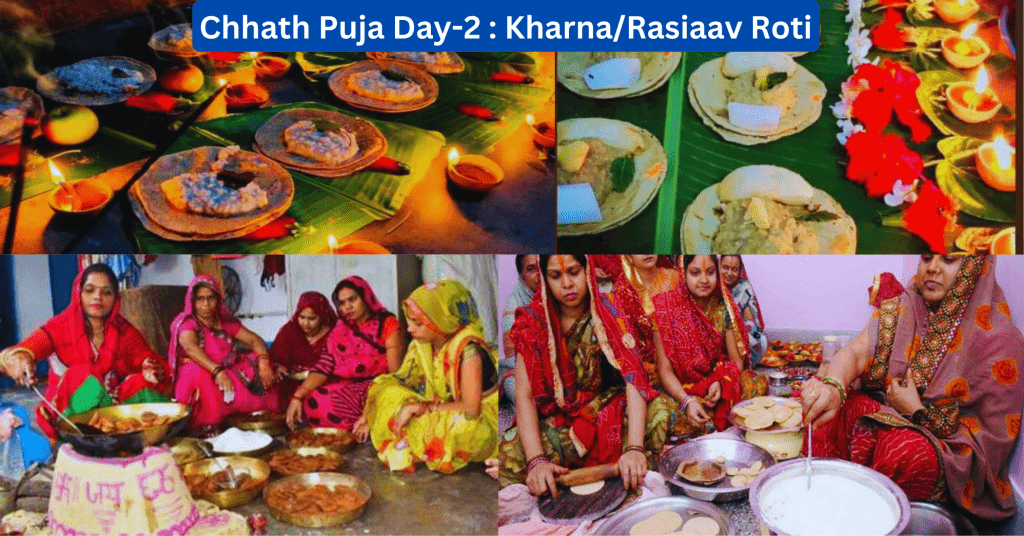
Day 3: Sandhya Arghya
The third day is the main festival. This day devotees observe a strict fast, majority being women, by performing nirjala vrat i.e. not consuming either food or water.
The entire day is spent in preparing the prasad for performing the prayers in the evening.
Later, in the evening, devotees gather by the river, (or by a water tank where river is not possible) offer the prayers at sunset, and sing cultural folk songs reflecting the culture and history of Bihar and the region. In the night, the Kosi ceremony is performed where a earthen lamp is lit and the prasad is placed inside a covering of sugarcane.
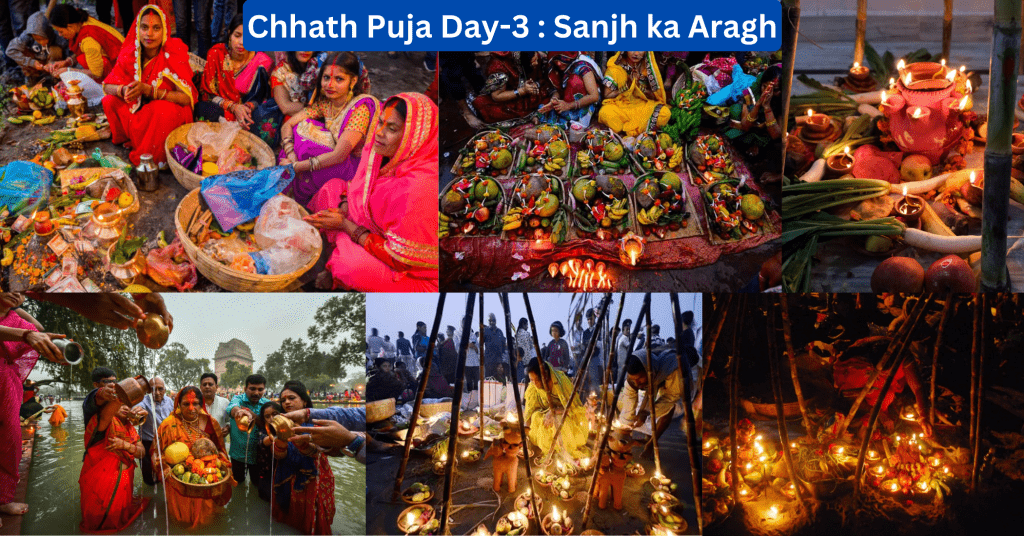
Day 4: Usha Arghya or Bhorwa Ghat
On the fourth day, morning prayers which is called Usha Argya is offered to the Sun God. Devotees then assemble by the river before the sunrise. They offer arghya while standing in the water. Afterwards, they distribute the prasad and get elders’ blessings. They then break the fast with ginger and water, and then have a delightful meal called Paran or Parna. Thus, the four day Chhath Puja 2023 comes to an end.

Significance of Chhath Puja
In Hinduism, Sun God is considered one of the most important deities and is worshiped for his life-giving energy and power. He is considered to be the source of light, heat, and energy on Earth, and worshiping him brings good health, prosperity, and happiness.
Also Read: Navratri 2023: Best Fasting Practices – What we can eat and When to Break the Navratri Fast
Worshiping the Sun God on the day of Chhath is considered extremely auspicious, as he is considered the source of all life on Earth. The festival is celebrated during the month of Kartik, marking the end of the monsoon season and the beginning of the winter season.
According to a legend, King Priyavrata, son of the first Manu Swayambhuva, performed a yajna to get a son upon the advice of Maharishi Kashyap. After the yajna, Queen Malini gave birth to a son, but the baby was born dead. Mata Shashthi descended from the sky in a plane and, with her grace, brought the child back to life. This event led to the worship of Shashthi Devi and the initiation of Chhath Puja rituals.
The Prasad of Chhath Puja, offered to the Sun God, is considered sacred and divine. It is prepared with great devotion using natural and pure ingredients, as onion, garlic, and spices are avoided due to their impurity. The Prasad includes fruits, sweets, and other vegetarian dishes, promoting good health, immunity, and disease prevention.
Chhath Puja also finds its roots in the great epics, Ramayana and Mahabharata.
Ramayana: The legend of Lord Rama and Mata Sita is well-known. Upon returning from their arduous 14-year exile in Lanka, they, being part of the Sun race, prayed to the Sun god on the Shashti tithi of Kartika masa. Their observance of nirjala vrat and breaking of the fast the next day initiated the tradition of Chhath puja.
Mahabharata: Draupadi, the Pandavas’ wife, also performed similar rituals on the 6th day of Kartika masa to appease the Sun, ensuring their safety during their exile. Her sincere prayers played a pivotal role in the Pandavas’ journey and the kingdom’s restoration.
Also Read: Happy Diwali 2023: 10 Reasons to Celebrate the Festival of Lights
Chhath Puja: Fasting Benefits and Scientific Importance
The benefits of fasting during Chhath Puja in Hinduism include:
- Purification of the Body: Chhath Puja fasting helps in cleansing the body of toxins and impurities, improving digestion.
- Mental Purification: Fasting is beneficial not only for the physical but also for mental and spiritual well-being. It purifies the mind, reduces negative thoughts, and enhances spiritual growth.
- Willpower: Observing a four-day fast during Chhath Puja requires strong willpower and self-discipline, which can be beneficial in other aspects of life.
- Devotion: Fasting is a symbol of devotion and dedication towards the Sun God. It deepens the connection between devotees and the deity, leading to spiritual awakening.
Chhath Puja is not just a matter of faith; it has scientific underpinnings. Taking a dip in the river and exposing oneself to the Sun increases the flow of solar bio-electricity in the body, enhancing overall health. Some even argue that the rituals help prepare the body for the approaching winter by eliminating harmful bacteria and viruses.
Also Read: Ayodhya Ram Mandir: History, Architecture, Significance, and How to reach the Lord Ram Temple
Chhath Puja: Concluding with Harmony in Community
Chhath Puja stands as a symbol of harmony, bringing together people of all ages and backgrounds. Men, women, children, and elders join hands to offer prayers, celebrating the Sun god and his consorts for illuminating countless lives. Dressed in vibrant attire, participants sing folk songs and engage in traditional dances, transcending differences and embracing the warmth of communal living.
Chhath Puja Prasad is believed to be filled with positive energy and vibrations, warding off negative energies and promoting overall well-being. It is considered a powerful form of blessings from the deity, capable of fulfilling the wishes of devotees.
In conclusion, Chhath Puja is a celebration deeply ingrained in both myth and science, fostering unity and reverence for nature. If you have additional insights or details to share about this remarkable festival, please feel free to leave your comments. We are eager to learn more about Chhath Puja and its rich traditions.
The festival serves as a reminder that living in harmony with nature is essential for a fulfilling life.
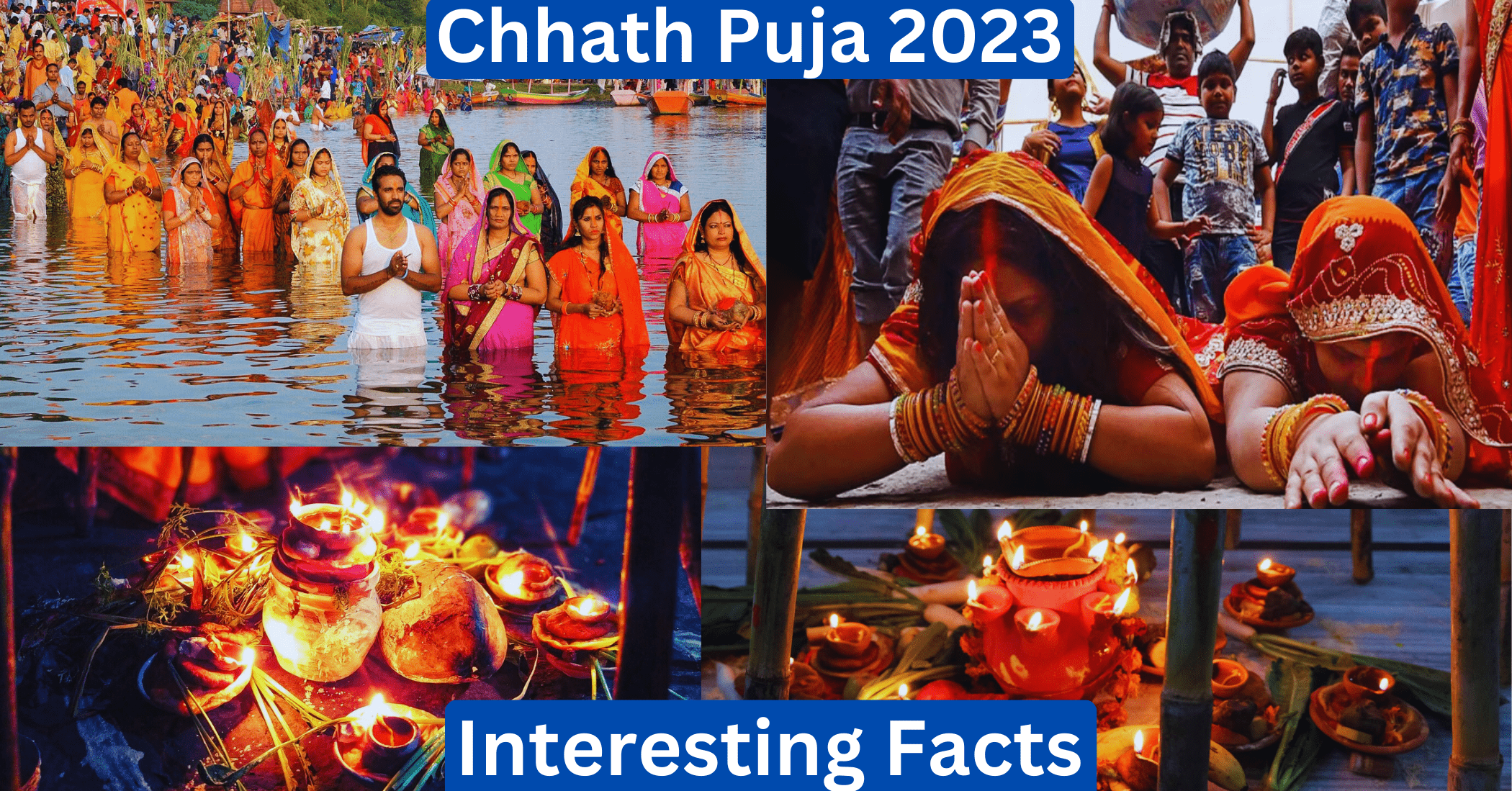



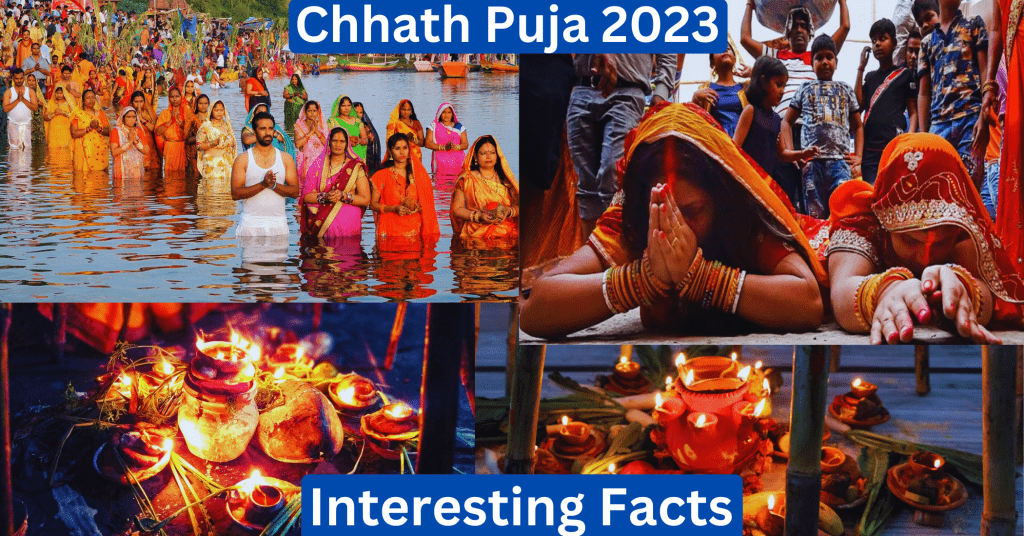
We wish you continued success with the following article.
Thank you so much please do read other interesting articles also